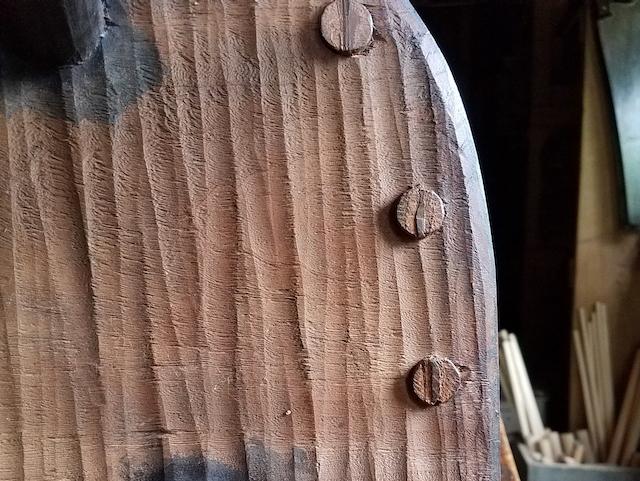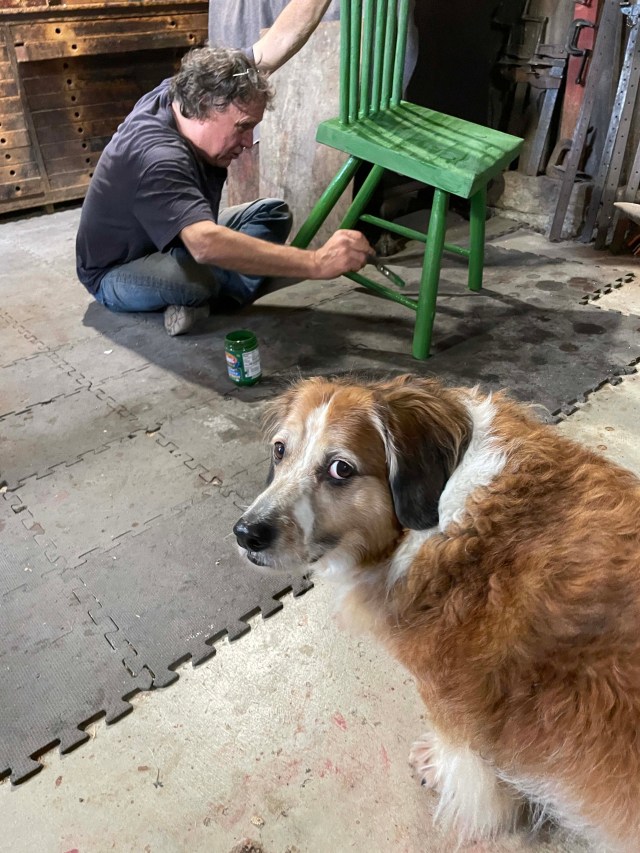
Touching a surface that had been gently used for hundreds of years is something that cannot be easily replicated. And so, for the most part, I’ve never attempted it.
Why? I’ve seen hundreds of new pieces of furniture that have been “aged” through chemical and physical abuse. And to be honest they reminded me of people who had also been through those kinds of abuse. Empty – and a bit wanting.
It wasn’t until I met John Porritt, a professional chairmaker and finisher, that I encountered surfaces that had the same magical quality of an antique from 1790. It’s not that John was trying to fool me with his finishes. John was completely upfront about his work. But his finishes had the same spirit of old work.

Everything – and I mean everything – has been mellowed. Nothing shouts or screams or insists upon itself. The surfaces are there. They are believable. And they feel… human.
That’s because they are made with great care and zero cynicism.
Most surprising was the amount of careful burnishing that goes into John’s work. After three seconds of thought, this should be obvious. Furniture surfaces aren’t just abraded by the years of use. They are also gently compressed by everything from your tailbone to the rivets on your pants.

The tools for burnishing are pretty simple. A couple deer antlers. The shaft of a screwdriver. A chainmail pot scrubber and a few special pebbles. But what isn’t simple is how they are applied during the process and how often. Burnishing isn’t like a seal coat of shellac (“And now we burnish!). Instead it is an ongoing process throughout finishing. Different amounts of burnishing on different areas of the piece.
The subtle glow and shine that results from the work is its own reward.

Also fascinating is how John applies and removes color. Again, color isn’t just a single stage in the process. It is added and removed (using a variety of simple processes) to produce surfaces that are almost luminous, and that fade into the surfaces above and below the color.
If all this sounds too complex or way over your abilities, it’s not. Nothing in “The Belligerent Finisher” is difficult. Or beyond the ability of a passionate beginner. Indeed, it is the combination of these simple and individual steps that is the genius of John’s work.

If you know my work, you know I make no effort to tone down the crisp lines and newness of my work. I do this out of honesty. But at the same time, my goal is to create work that reduces your blood pressure (read the chapter “Seeing Red” in “The Anarchist’s Design Book”). So John’s work has me thinking – a lot.
With one of my recent chairs I started burnishing its surfaces, much like he describes in “The Belligerent Finisher.” It wasn’t difficult. It was actually pleasurable. And after some paint and black wax, I could feel the difference the burnishing made. Everything was just a little more wanting to be touched.
I’m not one to make sudden changes in my work. I am completely iterative. But I can feel John’s ideas scratching at the back of my brain. His chairs and his surfaces are just too beautiful to ignore.
“The Belligerent Finisher” is both a revelation and a bargain at $21. You can read it in an afternoon. But it will stick with you for a lot longer.
— Christopher Schwarz















